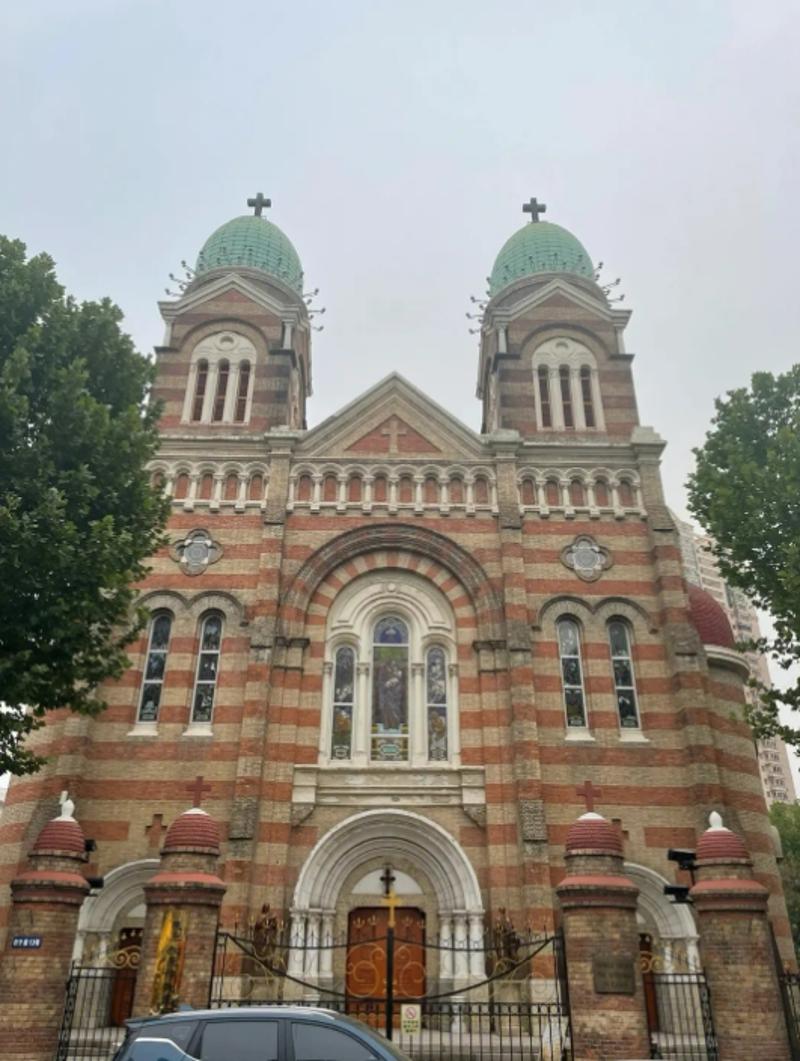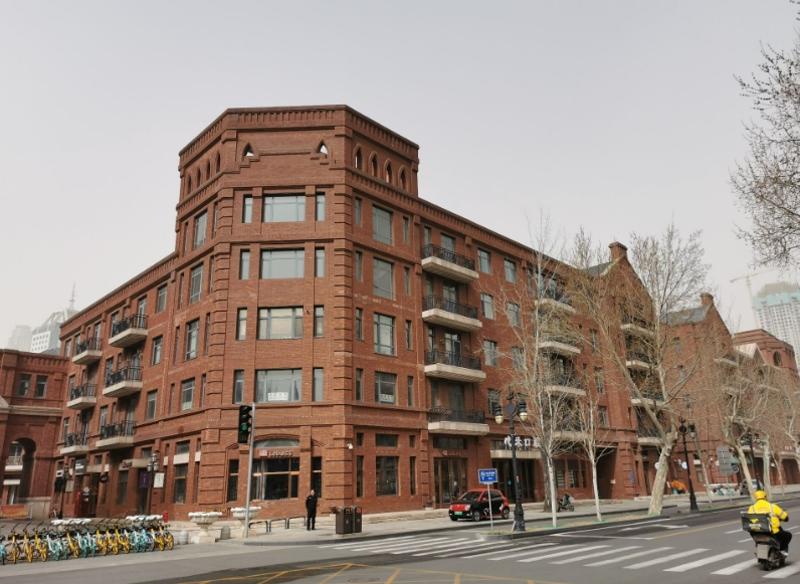Tianjin Wudadao: A Cultural and Historical Tourism Area
The Wudadao Cultural Tourism Area, located in Tianjin, is a national AAAA-level tourist attraction. It lies in a rectangular area south of Chengdu Road, north of Machang Road, east of Xikang Road, and west of the intersection of Machang Road and Nanjing Road. This area encompasses 23 intersecting streets, with a total length of 17 kilometers and an area of 1.28 square kilometers. Wudadao is renowned for its unique architectural styles and rich historical and cultural heritage, making it a famous tourist destination in Tianjin and across China.

Historical Background
Origins During the Concession Period
"Wudadao" is only a part of Tianjin's former concession areas. From 1861 to 1945, Tianjin had concessions from nine countries. In the semi-feudal and semi-colonial society of that time, these concessions were "states within a state," enjoying extraterritorial rights. The concessions not only provided protection for foreigners from turmoil but also attracted many historical figures from China and abroad to live there. In the late 19th and early 20th centuries, the Wudadao area was initially a low-lying, swampy land in the southern part of Tianjin, dotted with rudimentary shanty dwellings. Later, this area was incorporated into the British concession and gradually developed.
Initial Development
In 1903, the British concession expanded southward, incorporating the large area south of the Wall River, forming the present Wudadao area. After the 1911 Revolution, many Qing dynasty royals, nobles, wealthy merchants, and various celebrities moved to the Tianjin concession, making Wudadao their home. The special status of the concession and Tianjin's geographical advantages spurred the rapid development of Wudadao, making it a haven for politics and a hotspot for business opportunities.
Modern Development
The origin of the name "Wudadao" is still uncertain. There are two main theories: one suggests it emerged in the 1950s and 1960s when many high-ranking intellectuals and leaders lived in this area, named after the five long streets—Machang Road, Munan Road, Dali Road, Chongqing Road, and Chengdu Road; the other theory is that in the 1980s, during housing renovations led by Tianjin Mayor Li Ruihuan, the area enclosed by Chengdu Road, Nanjing Road, Machang Road, Xikang Road, and Guizhou Road was selected, and the name "Wudadao" was popularized as a nickname for this region.

Area Overview
The Wudadao Cultural Tourism Area covers the rectangular area south of Chengdu Road, north of Machang Road, east of Xikang Road, and west of the intersection of Machang Road and Nanjing Road. This area has 2,185 buildings, including 423 historical style buildings and 347 protected cultural heritage sites, collectively forming the "Wudadao Modern Architecture Group." Wudadao showcases not only various exotic architectural styles but also represents the influence of Western civilization on Chinese social lifestyles.
Architectural Features
The architectural styles in Wudadao are diverse, including Gothic, Baroque, Romanesque, Byzantine, Southern European medieval styles, and 19th-century eclectic styles. The area features buildings in English, French, Italian, German, and Spanish styles, totaling over 230 structures, earning it the nickname "World Architecture Expo." This district not only displays architectural beauty but also exemplifies the integration of Western lifestyles into Chinese society.
Garden Art
The garden art in Wudadao is also unique, combining diverse and native tree species. The area has approximately 4,500 street trees and over 10,000 courtyard trees, with species including ginkgo, Chinese scholartree, crabapple, ash, and goldenrain tree. Each street has its distinctive tree species, creating unique green landscapes. Recent efforts by the Heping District Urban Management Committee have enhanced the area's greenery, adding several "pocket gardens" and increasing the green area.
District Design
The design and planning of Wudadao strictly adhered to the construction regulations of the British concession period, which included detailed requirements for building aesthetics, setbacks, plot coverage, floor area ratio, and spacing between buildings. The concession area was divided into first, second, and third zones, with Wudadao located in the first and second zones. Buildings here were mainly European-style residences, with strict guidelines to ensure modern, high-standard residential areas.
The well-planned public facilities in Wudadao, including schools, hospitals, gardens, sports fields, and swimming pools, complemented by modern indoor amenities such as flush toilets, heating boilers, bathtubs, and electric appliances, made it a modern high-class residential area. These features attracted many upper-class individuals to invest in and move to Wudadao, making it a hub for the elite.
Historical Figures and Residences
Wudadao has been home to numerous historical figures, with over 300 residences once occupied by notable personalities. These include the residences of Sun Yat-sen's relatives, Zhang Xueliang's residence, and relatives of Puyi, the last emperor of China. These historical homes are precious heritage sites and an integral part of Wudadao's unique cultural charm.
Modern Development Goals
Wudadao Cultural Tourism Area aims to promote high-quality cultural and tourism development while preserving its historical appearance. The goal is to create a fashionable northern international cultural tourism consumption area and tourist destination. By enriching cultural tourism products, improving the special tourism service system, and enhancing industry management levels, Wudadao is striving to become a "Tianjin card" that showcases the city's charm.
Conclusion
As a cultural and historical tourism area, Tianjin Wudadao blends history and modernity, attracting countless tourists with its rich architectural styles and profound historical heritage. Visitors to Wudadao can appreciate the beautiful buildings and experience the historical changes and developments. By protecting and utilizing these valuable historical heritages, Wudadao will continue to serve as a significant landmark in Tianjin, offering a window into the past and present for all who visit.
Q&A
Q1: What is the significance of the architectural styles in Wudadao?
A1: The architectural styles in Wudadao are significant because they represent a fusion of Western and Chinese cultures during the late 19th and early 20th centuries. The diverse styles, including Gothic, Baroque, and Byzantine, reflect the influence of different European countries and showcase the integration of Western lifestyles into Chinese society.
Q2: Why is Wudadao referred to as the "World Architecture Expo"?
A2: Wudadao is referred to as the "World Architecture Expo" because it features over 230 buildings in various international styles, including English, French, Italian, German, and Spanish. This diversity of architectural designs makes it a showcase of global architectural heritage, earning it this prestigious nickname.
Q3: How does Wudadao contribute to Tianjin's cultural and tourism development?
A3: Wudadao contributes to Tianjin's cultural and tourism development by preserving its historical buildings and promoting high-quality cultural tourism. The area aims to become a fashionable international cultural tourism consumption area and tourist destination, enhancing Tianjin's charm and attracting visitors from around the world.
note: This return of all, without the author's permission, may not be reproduced